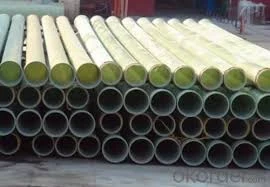
-
 Afrikaans
Afrikaans -
 Albanian
Albanian -
 Amharic
Amharic -
 Arabic
Arabic -
 Armenian
Armenian -
 Azerbaijani
Azerbaijani -
 Basque
Basque -
 Belarusian
Belarusian -
 Bengali
Bengali -
 Bosnian
Bosnian -
 Bulgarian
Bulgarian -
 Catalan
Catalan -
 Cebuano
Cebuano -
 China
China -
 China (Taiwan)
China (Taiwan) -
 Corsican
Corsican -
 Croatian
Croatian -
 Czech
Czech -
 Danish
Danish -
 Dutch
Dutch -
 English
English -
 Esperanto
Esperanto -
 Estonian
Estonian -
 Finnish
Finnish -
 French
French -
 Frisian
Frisian -
 Galician
Galician -
 Georgian
Georgian -
 German
German -
 Greek
Greek -
 Gujarati
Gujarati -
 Haitian Creole
Haitian Creole -
 hausa
hausa -
 hawaiian
hawaiian -
 Hebrew
Hebrew -
 Hindi
Hindi -
 Miao
Miao -
 Hungarian
Hungarian -
 Icelandic
Icelandic -
 igbo
igbo -
 Indonesian
Indonesian -
 irish
irish -
 Italian
Italian -
 Japanese
Japanese -
 Javanese
Javanese -
 Kannada
Kannada -
 kazakh
kazakh -
 Khmer
Khmer -
 Rwandese
Rwandese -
 Korean
Korean -
 Kurdish
Kurdish -
 Kyrgyz
Kyrgyz -
 Lao
Lao -
 Latin
Latin -
 Latvian
Latvian -
 Lithuanian
Lithuanian -
 Luxembourgish
Luxembourgish -
 Macedonian
Macedonian -
 Malgashi
Malgashi -
 Malay
Malay -
 Malayalam
Malayalam -
 Maltese
Maltese -
 Maori
Maori -
 Marathi
Marathi -
 Mongolian
Mongolian -
 Myanmar
Myanmar -
 Nepali
Nepali -
 Norwegian
Norwegian -
 Norwegian
Norwegian -
 Occitan
Occitan -
 Pashto
Pashto -
 Persian
Persian -
 Polish
Polish -
 Portuguese
Portuguese -
 Punjabi
Punjabi -
 Romanian
Romanian -
 Russian
Russian -
 Samoan
Samoan -
 Scottish Gaelic
Scottish Gaelic -
 Serbian
Serbian -
 Sesotho
Sesotho -
 Shona
Shona -
 Sindhi
Sindhi -
 Sinhala
Sinhala -
 Slovak
Slovak -
 Slovenian
Slovenian -
 Somali
Somali -
 Spanish
Spanish -
 Sundanese
Sundanese -
 Swahili
Swahili -
 Swedish
Swedish -
 Tagalog
Tagalog -
 Tajik
Tajik -
 Tamil
Tamil -
 Tatar
Tatar -
 Telugu
Telugu -
 Thai
Thai -
 Turkish
Turkish -
 Turkmen
Turkmen -
 Ukrainian
Ukrainian -
 Urdu
Urdu -
 Uighur
Uighur -
 Uzbek
Uzbek -
 Vietnamese
Vietnamese -
 Welsh
Welsh -
 Bantu
Bantu -
 Yiddish
Yiddish -
 Yoruba
Yoruba -
 Zulu
Zulu
Innovative Applications of Fiberglass in Automotive Manufacturing and Design
The Rise of Fiberglass Cars A Revolution in Automotive Design
In the world of automotive design, few materials have made as significant an impact as fiberglass. While traditionally used in boats and aircraft, fiberglass entered the automotive industry in the mid-20th century, revolutionizing how vehicles were manufactured and designed. Its unique properties have made it a material of choice for car manufacturers looking to balance performance, cost, and aesthetics.
The Rise of Fiberglass Cars A Revolution in Automotive Design
Furthermore, fiberglass is highly malleable, allowing for more creative and aerodynamic designs. This flexibility in design has led to the creation of some of the most iconic and innovative cars in history. For instance, the Chevrolet Corvette, introduced in the early 1950s, showcased the potential of fiberglass in automotive design. Its sleek, curvaceous lines became a symbol of American muscle and performance. Over the decades, other manufacturers followed suit, integrating fiberglass into various models, further cementing its place in automotive history.
fiberglass car

Another significant advantage of fiberglass is its resistance to rust and corrosion. Unlike traditional metals, fiberglass does not corrode over time, which means that cars made from this material require less maintenance and have a longer lifespan. This durability factor is particularly appealing to consumers looking for reliable, long-lasting vehicles. Additionally, fiberglass components can be manufactured with less energy than their metal counterparts, making them a more environmentally friendly option during the production process.
However, it is essential to recognize that fiberglass is not without its drawbacks. The production process can be labor-intensive, and repairing fiberglass can be more complicated compared to metal. Despite these challenges, advancements in technology and manufacturing techniques continue to improve the efficiency and cost-effectiveness of fiberglass production.
In recent years, there has been a resurgence of interest in fiberglass cars, particularly in the niche market of electric vehicles and custom builds. As electric vehicles gain traction, lightweight materials like fiberglass play an imperative role in enhancing range and efficiency. Additionally, custom car enthusiasts have embraced fiberglass for its versatility and ability to create unique designs that stand out on the road.
In conclusion, the evolution of fiberglass in the automotive industry marks a significant milestone in car manufacturing. With its lightweight nature, design flexibility, and resistance to corrosion, fiberglass has proven to be a valuable asset in creating vehicles that meet the demands of modern consumers and a sustainable future. As technology continues to advance, it’s likely that we will see even more innovative applications of fiberglass in the cars of tomorrow, maintaining its status as a pivotal material in automotive design.









